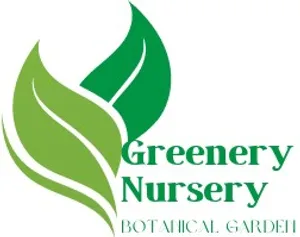
Well Watered Hybrid Red Annar/Pomegranate (Punica granatum) Live Fruit Plan..More
₹499
₹1,798
72% OffNow or Never Deals!
00H:46M:35S
View Available Offers
Final Price inclusive of all taxes
size
FREE SIZE
Product Information
Brand
Greenery Nursery
Product Type
Live Fruit Plant
Life Cycle
Annual
Hybrid
Yes
Country_of_Origin
India
Product Description
🌳 Pomegranate Plant Description (Punica granatum)
The pomegranate is a fruit-bearing deciduous shrub or small tree prized for its nutrient-rich fruit, vibrant red flowers, and ornamental value. It is native to the Middle East and South Asia, and now widely cultivated in tropical, subtropical, and Mediterranean climates around the world.
🔍 Scientific Classification:
Common Name: Pomegranate
Scientific Name: Punica granatum
Family: Lythraceae (formerly placed in its own family, Punicaceae)
Type: Deciduous shrub or small tree
🌿 Plant Description:
🌱 Growth Habit:
Grows as a dense, multi-stemmed shrub or small tree.
Height: typically 2 to 5 meters (6.5 to 16 feet), but can reach up to 10 meters.
Has spiny branches and forms a naturally rounded or vase-like shape.
Lifespan: very long-lived, sometimes surviving for over 100 years.
🍃 Leaves:
Leaves are simple, glossy, and opposite or in whorls.
Shape: narrow and oblong, about 3–7 cm long.
Bright green in color, turning yellow before falling off in winter in cooler climates.
🌸 Flowers:
Flowers are bright red, sometimes orange or pink, and bell-shaped.
Typically 1 to 3 inches in diameter, with 5–7 petals.
Can be solitary or in small clusters.
Blooming season: late spring to early summer.
Both male and bisexual flowers may occur on the same plant.
🍎 Fruits:
The pomegranate fruit is a round berry, about 5–12 cm in diameter.
Has a thick, leathery skin that is reddish to deep pink when ripe.
Inside are hundreds of juicy seeds (arils) encased in white, spongy membranes.
Each aril contains a tiny seed, surrounded by sweet-tart, red or pink pulp.
The fruit does not ripen further after harvest.
🌍 Climate and Growing Conditions:
Thrives in hot, dry climates and well-drained soil.
Drought-tolerant once established but needs regular watering during fruiting.
Requires full sun for best fruit production.
Grows best in USDA zones 7–11.
Tolerates mild frost, but young plants may need protection in colder areas.
🌱 Propagation:
Commonly propagated by hardwood cuttings for consistent fruit quality.
Can also be grown from seed, but seed-grown plants take longer to fruit and may vary genetically.
Trees typically start bearing fruit in 2–3 years after planting.
🍽️ Uses:
Fruit is eaten fresh, juiced, or used in salads, sauces, desserts, and cooking.
The juice is rich in antioxidants, vitamin C, and potassium.
Pomegranate peel and seeds are used in traditional medicine for digestive and heart health.
The tree is also planted as an ornamental for its beautiful flowers and structured shape.
✨ Special Features:
Symbolic in many cultures: represents fertility, abundance, and prosperity.
Attracts bees and hummingbirds with its bright flowers.
Can be grown in pots or trained as a bonsai.
The pomegranate is a fruit-bearing deciduous shrub or small tree prized for its nutrient-rich fruit, vibrant red flowers, and ornamental value. It is native to the Middle East and South Asia, and now widely cultivated in tropical, subtropical, and Mediterranean climates around the world.
🔍 Scientific Classification:
Common Name: Pomegranate
Scientific Name: Punica granatum
Family: Lythraceae (formerly placed in its own family, Punicaceae)
Type: Deciduous shrub or small tree
🌿 Plant Description:
🌱 Growth Habit:
Grows as a dense, multi-stemmed shrub or small tree.
Height: typically 2 to 5 meters (6.5 to 16 feet), but can reach up to 10 meters.
Has spiny branches and forms a naturally rounded or vase-like shape.
Lifespan: very long-lived, sometimes surviving for over 100 years.
🍃 Leaves:
Leaves are simple, glossy, and opposite or in whorls.
Shape: narrow and oblong, about 3–7 cm long.
Bright green in color, turning yellow before falling off in winter in cooler climates.
🌸 Flowers:
Flowers are bright red, sometimes orange or pink, and bell-shaped.
Typically 1 to 3 inches in diameter, with 5–7 petals.
Can be solitary or in small clusters.
Blooming season: late spring to early summer.
Both male and bisexual flowers may occur on the same plant.
🍎 Fruits:
The pomegranate fruit is a round berry, about 5–12 cm in diameter.
Has a thick, leathery skin that is reddish to deep pink when ripe.
Inside are hundreds of juicy seeds (arils) encased in white, spongy membranes.
Each aril contains a tiny seed, surrounded by sweet-tart, red or pink pulp.
The fruit does not ripen further after harvest.
🌍 Climate and Growing Conditions:
Thrives in hot, dry climates and well-drained soil.
Drought-tolerant once established but needs regular watering during fruiting.
Requires full sun for best fruit production.
Grows best in USDA zones 7–11.
Tolerates mild frost, but young plants may need protection in colder areas.
🌱 Propagation:
Commonly propagated by hardwood cuttings for consistent fruit quality.
Can also be grown from seed, but seed-grown plants take longer to fruit and may vary genetically.
Trees typically start bearing fruit in 2–3 years after planting.
🍽️ Uses:
Fruit is eaten fresh, juiced, or used in salads, sauces, desserts, and cooking.
The juice is rich in antioxidants, vitamin C, and potassium.
Pomegranate peel and seeds are used in traditional medicine for digestive and heart health.
The tree is also planted as an ornamental for its beautiful flowers and structured shape.
✨ Special Features:
Symbolic in many cultures: represents fertility, abundance, and prosperity.
Attracts bees and hummingbirds with its bright flowers.
Can be grown in pots or trained as a bonsai.

Now or Never Deals!
Extra 50% Off
Sale ends in
00H : 46M : 35S
